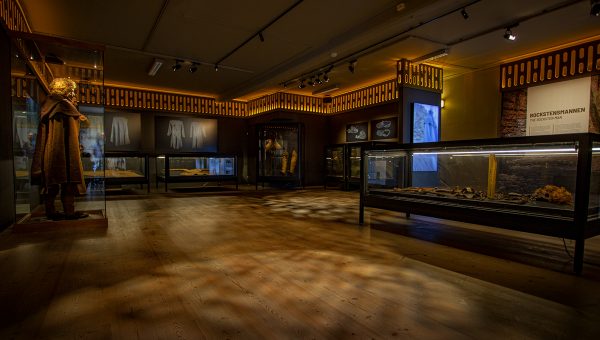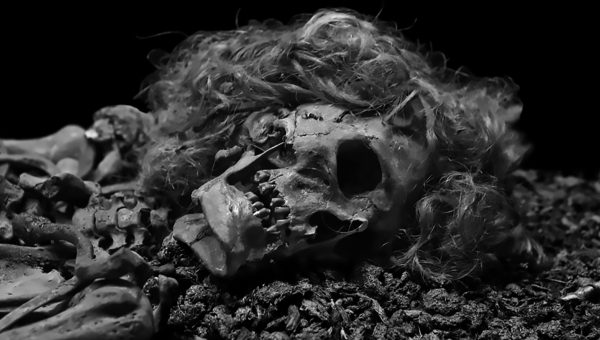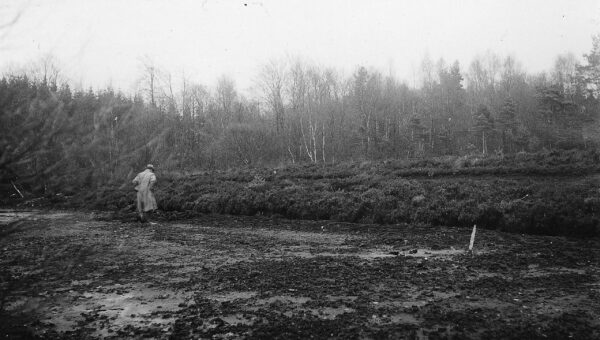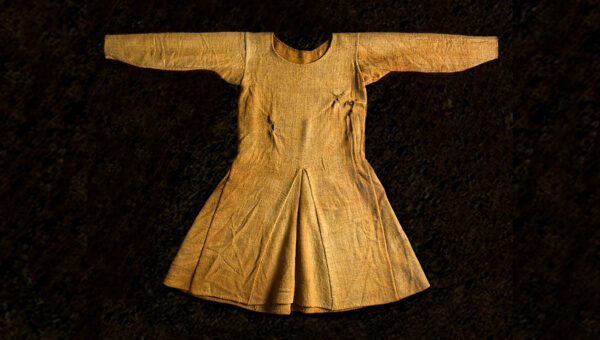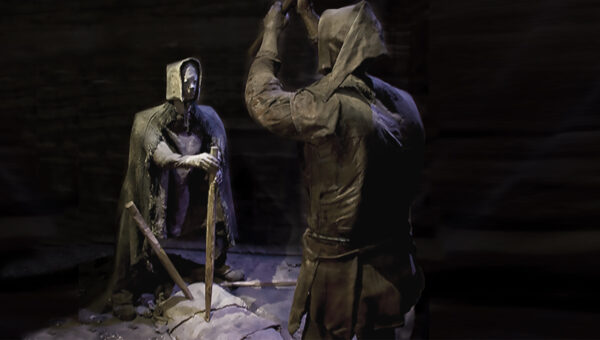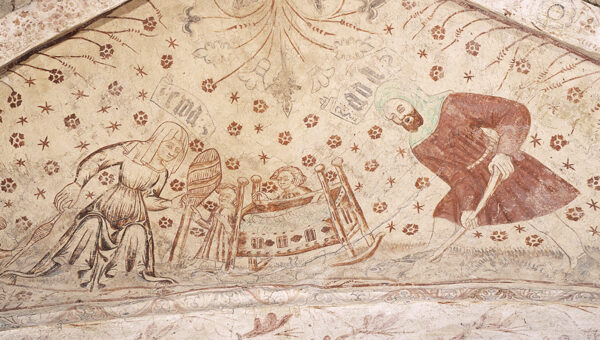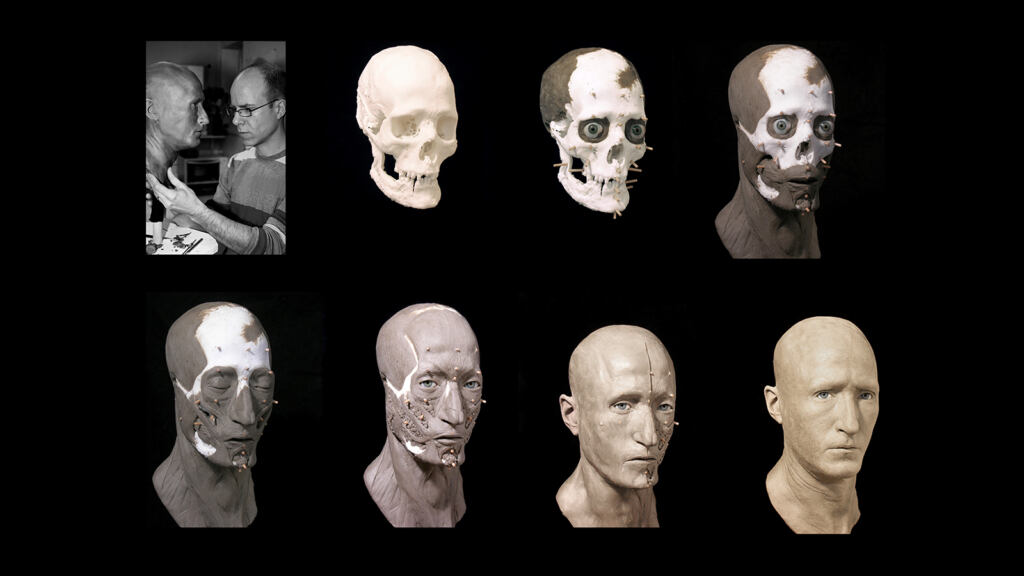
THE BOCKSTEN MAN GETS A FACE
The work of giving the Bocksten Man his face back was based on scanning the skull, prototype manufacturing and many hours of work by a skilled model maker. Here we tell you step by step how it happened.
LASER SCANNING
In May 2005, the first step was taken to recreate the Bocksten Man’s appearance and develop a full-size model. In collaboration with the company Leica Geosystems, a so-called 3D laser scan of the Bocksten Man’s skull was carried out. Based on the scan, a three-dimensional image of the skull was then built up. The results confirmed the observations that the skull was to some extent disformed and that the jaw was oblique.
CT SCANNING AND PRODUCTION OF PROTOTYPE
Without adjusting the shape of the skull, it would not be possible to start work on the reconstruction. To proceed, the skull was required to undergo a CT scan. The examination was carried out in December 2005 at the X-ray department at the hospital in Varberg. The result was a three-dimensional image, which was then sent to the company GT-Prototyper in Ystad. Soon they had produced a first prototype of nylon plastic. The damage on the skull was even more evident.
THE SKULL GETS A PLASTIC SURGERY
Now the plastic skull needed to be adjusted to regain the original shape of the skull. For this, Halland’s Museum of Cultural History contacted Professor Claes Lauritzen at the Craniofacial Unit at Sahlgrenska University, Hospital in Gothenburg. Together with his team, Claus Lauritzen performed a two-hour “plastic surgery” of the plastic model of the Bocksten Man’s skull. With about the same tools and methods as in a “normal” operation, the team managed to fix the skull’s damages. The media’s interest was enormous and a group of journalists followed the whole process in the hospital. Now there was a new prototype and it was time for the model maker to start working!
MODEL MAKER OSCAR NILSSON TAKES OVER
Already when the idea for the project was born, the museum contacted the sculptor and model maker Oscar Nilsson in Stockholm. Oscar is a trained archaeologist and artist. He has many years of experience working with reconstructions in different sizes for museums in Sweden and abroad. For example, at the Vasa Museum in Stockholm, Nilsson has recreated some of the men and women who died on the regal ship Vasa when it sank in 1628. Oscar Nilsson has also worked to reconstruct the appearance of the 9,000-year-old Bäckaskog woman at the Historical Museum and the 13th-century regent Birger Jarl at the Medieval Museum.
Special methods are required to scientifically recreate a face. Oscar Nilsson starts from the plastic copy of the skull and then, with the help of measuring points, builds up the face step by step and layer upon layer. The same technology is used when you want to recreate and identify more modern victims and there is a great chance that you get a result close to the original.
Oscar Nilsson begins the work of placing a large number of pegs, which mark the distance from the skull and jawbones out to the estimated skin level. All calculations are based on extensive statistical material.
The next step is to use clay to create about twenty of the most important muscles on the face. There is also technology to recreate the shape of the nose, which consists mostly of soft tissues. The ears are more difficult and may be created based on the appearance of the skull and the artist’s artistic ability.
When Oscar puts on the layers of clay that will shape muscles and fat, he rolls out clay into a thin, thin layer that he puts it on like skin. Wrinkles and other characteristics and age traits are sculpted. The face is really starting to come alive!
When the clay model is finished, Oscar makes a plaster cast of it to produce a mold that can be used for the final casting in silicone. Then there is the work of painting the final silicone face and to mount on hair, eyebrows and eyelashes.
The modell is finished – The Bocksten Man has woken up!

